
Download American bullfrog distribution map (PDF)
 Tied to decline of native frogs, turtles, and waterfowl production.
Tied to decline of native frogs, turtles, and waterfowl production.
Indiscriminate feeders and will eat anything smaller than themselves, including ducklings, fish, mice, frogs, and small turtles.
In Montana, bullfrogs breed during warm weather in June and July.
Eggs hatch in about 4 or 5 days.
The tadpole stage may last 3 years, but metamorphosis has been observed in early June.
You can stop the spread of this species by not purchasing or releasing pet bullfrogs, and by reporting any field observations to your local Fish, Wildlife & Parks office.
Dark green or brownish-green above with dark blotches and a cream underbelly
No ridges along the sides of their back, but do have prominent ridges running from their eyes over their external ear drum to their shoulders.
Tadpoles are olive-green above, cream below, and may grow to 4.5 inches in length.
Their loud, deep “jug o’rum” call can be heard from a considerable distance.

Native to Europe/Asia
Introduced into Great Lakes via ballast water
Spreads by overland transport of resting eggs on fishing gear, bilge water, livewells and bait buckets
Competes with juvenile fish and planktivores for food Identification
0.6-1.3 cm with tail
Tail has 3 pairs of barbs and a characteristic loop at end

Spreads via bait buckets, ballast water, and aquarium dumping
Females can carry fertilized eggs, one female can start new population
Native crayfish populations have been eliminated by the rusty crayfish through competition and disease
Common aquarium crayfish Identification
0.6-1.3 cm with tail
Tail has 3 pairs of barbs and a characteristic loop at end
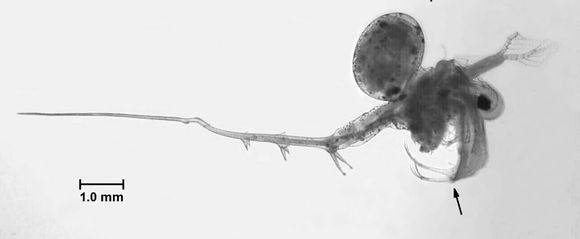
Native to Europe
Introduced into Great Lakes in 1980’s via ballast water
Spreads by overland transport of resting eggs on fishing gear, bilge water, livewells and bait buckets
Competes with juvenile fish for food
3/8" long
translucent color
bulbous egg pouch
straight caudal appendage
look like gelatinous-like blobs on downrigger cables
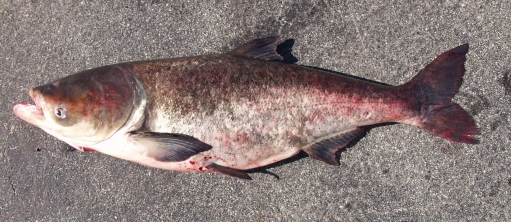

Spread via pond escapement or by deliberate release
Grows very quickly and feeds voraciously on snails, clams, mussels, and aquatic insects, can eat 3 to 4 lbs of mussels per day
Would impact native mussel and snail communities
Grows to > 3 feet long, averages 33 lbs, up to 150 lbs
closely resembles the grass carp
The two species are similar in overall body shape, size and placement of fins.
Both black carp and grass carp have very large scales.
In contrast to grass carp, the black carp is slightly darker in coloration (not black) and its pharyngeal teeth (throat teeth) are large and similar in appearance to human molars, an adaptation for crushing the shells of mollusks (Nico et al. 2005)
Commercial fishers have noted that black carp also have a somewhat pointed snout, a character they find useful in distinguishing it from grass carp.

Imported from Eastern Asia in 1963 for aquatic vegetation control in aquaculture ponds
Spread accidentally from aquaculture facilities and intentionally introduced in canals for vegetation control
Can eliminate vegetation, eradicate habitat for native fishes, forage for waterfowl, and increase nutrients
Usually 1-20 lbs, occasionally up to 100 lbs and 48 in long
body which is moderately compressed laterally.
mouth is terminally located on a wide head
eyes are small and low on the head.
It is olive-brown on the dorsal side, with silver sides and a white belly.
Scales are large with dark edging.
The dorsal fin origin is anterior to the pelvic fin origin and it has a short caudal peduncle.

Imported from Asia in 1973 by fish farmers to control algae blooms and as a food fish
Spreads via pond escapement or by deliberate release
Tolerate a wide range of environmental conditions
Grows quickly and to a large size and feeds voraciously on plankton
Competes with larval fish and paddle fish for food resources Can reproduce only in rivers
The species is known for leaping out of the water when startled (e.g., by noises such as a boat motor).
Usually 1-20lbs, occasionally up to 100 lbs and 40 in long
deep-bodied fish that is laterally compressed.
very silvery in color when young and when they get older they fade from a greenish color on the back to silver on the belly.
very tiny scales on their body but the head and the opercles (gill flap) are scaleless.
large mouth without any teeth in the jaw, but they have pharyngeal teeth.
eyes are situated far forward on the midline of the body and are slightly turned down.
most similar to bighead carp but have a smaller head, and upturned mouth without teeth, a keel that extends forward past pelvic fin base, lack the dark blotches characteristic of bighead carp and have highly branched gill rakers.
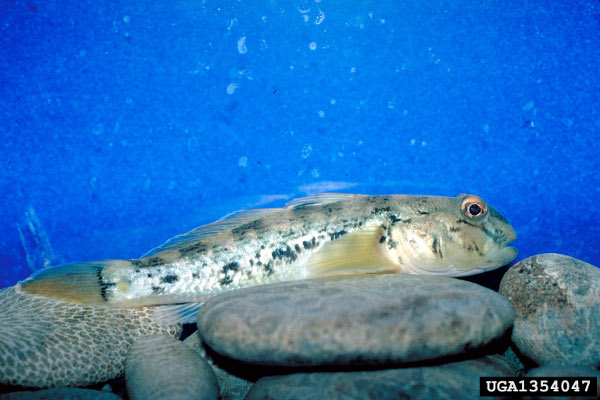
Introduced first into the Great Lakes via ballast water
Bottom-dwelling fish, native to Europe
Prefers cobble, rock, riprap habitats
Quickly dominates fisheries, can spawn several times a year
Are aggressive and compete with native bottom-dwellers, have reduced numbers of native fish in places where it has become established
Usually 3-6 in long, can reach up to 10 in
Young round gobies are solid slate gray.
Older fish are blotched with black and brown and have a white to greenish dorsal fin with a black spot at the posterior base.
It is very similar to native sculpins but can be distinguished by the presence of fused pelvic fins (sculpins have two separate fins)

Small perch-like European fish
First introduced into Great Lakes via ballast water
Spiny dorsal fins discourage predation
Considered a nuisance by anglers
Out competes perch for food, caused 75% declines in perch populations in Lake Superior
Size can reach up to 10 in
olive-brown to golden-brown on its back with yellowish white undersides.
Its fused dorsal fins are characterized by 12–19 dorsal spines followed by 11–16 soft dorsal rays. The caudal fin has 16–17 rays.
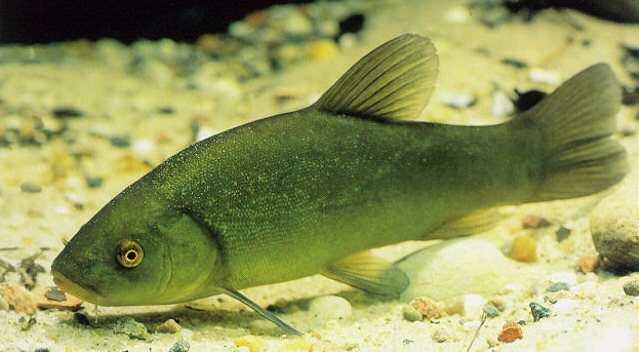
Introduced into Idaho in 1880’s, found throughout the Pend O’reille and the Coeur d’Alene river drainages, including downstream of Cabinet Gorge Dam
High reproductive potential, grow to 15 inches in Idaho and much larger in their native Europe
Would compete with native cyprinids and game fish
Member of the family cyprinidae
Up to 33 in, resembles carp
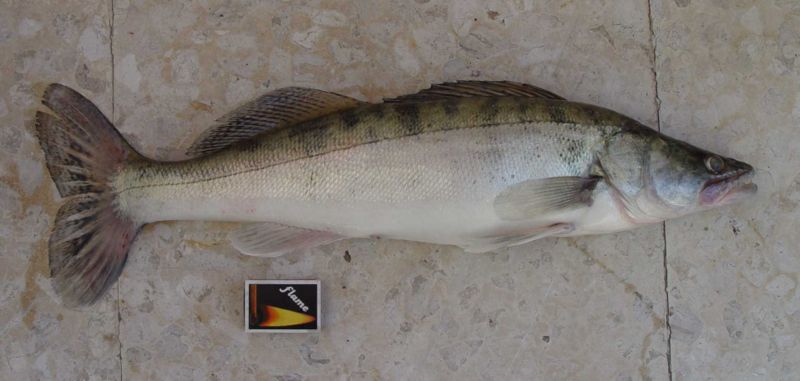
Also known as European pike-perch, closely related to walleye and native sauger
Introduced into North Dakota from Finland in 1989, which resulted in a reproducing population
Zander are thought to be in the Missouri River
Potential impacts include displacement, predation, and hybridization with walleye and sauger
Similar to walleye and sauger; typically 16-20 in although can reach 51 in and 44 lbs

At all life stages will compete for food and habitat with native and sport fish
Adults are voracious predators, feed on other fish, crustaceans, frogs, reptiles, birds and small mammals
Can survive underneath ice, northern snakeheads are present in Siberia and would be able to survive in Montana
Can tolerate hypoxic conditions, they are air breathers from late juvenile stage
The use of piscicides to control or eradicate populations would likely be ineffective because of their ability to air breath and move across land
Maximum size exceeds 33 in, similar to native burbot
long, thin fish with a single dorsal fin running the length of the fish. Also has a single long anal fin similar
color is brown with dark blotches.
somewhat flattened head with eyes located in a dorsolateral position on the anterior part of the head; anterior nostrils are present and tubular; dorsal and anal fins are elongated, and all fins are supported only by rays (Courtenay and Williams 2004).
Males are darker in color, and have a broader head, as compared to females
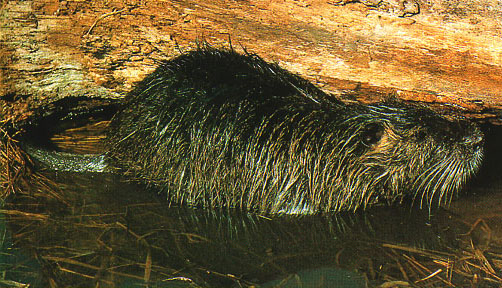
Identification
A large rodent from South America,
Originally introduced for fur farms
Degradation of habitat, destruction to agricultural crops and damage to infrastructure is well documented in areas where nutria have become established
Feeding habits make them extremely destructive to marsh vegetation
Eat up to 25% of their body weight per day
Populations grow rapidly, reproduce frequently (2-3 times annually) and mature early (4 to 6 months old)
Large rodent grows to 15-20 lbs, 25 inches in length, resembling both native beavers and muskrats.
long, thin round tail which distinguishes it from the beaver which has a flat tail and the muskrat which has a laterally flattened tail.

Causes biofouling, especially of complex power plant and industrial water systems
Competes with native species for limited resources also alters benthic substrates
cause problems in irrigation canals and pipes and drinking water supplies
Prodigious water filterers, removing substantial amounts of phytoplankton and suspended particulate from the water.
Their impacts are similar to those of the quagga mussel.
By removing the phytoplankton, they decrease the food source for zooplankton, therefore altering the food web.
Impacts associated with the filtration of water include increases in water transparency, decreases in mean chlorophyll a concentrations, and accumulation of pseudofeces
Water clarity increases light penetration causing a proliferation of aquatic plants that can change species dominance and alter the entire ecosystem. The pseudofeces that is produced from filtering the water accumulates and creates a foul environment. As the waste particles decompose, oxygen is used up, and the pH becomes very acidic and toxic byproducts are produced.
These major biofouling organisms can clog water intake structures, such as pipes and screens, therefore reducing pumping capabilities for power and water treatment plants, costing industries, companies, and communities. Recreation-based industries and activities have also been impacted; docks, breakwalls, buoys, boats, and beaches have all been heavily colonized.
Size < 2 in
Varies in color, but generally light-colored, with raised, concentric rings

Could possibly be a vector for the transmission of parasites and diseases
Clog screens of water intake pipes.
Size: can reach 2.5 in
relatively large globe-like shell
exhibits light coloration as a juvenile and olive green, greenish brown, brown or reddish brown pigmentation as an adult
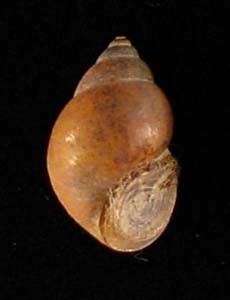
It is known to outcompete native snails
Potential to be a bio-fouling organism for underwater intakes and in swimming areas
Size: up to ~ ½ in
Shell is shiny pale brown, oval in shape, with a relatively large and rounded spire consisting of 5–6 somewhat flattened whorls
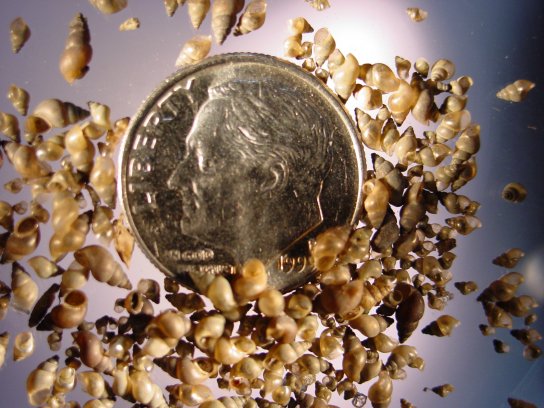
First found in Montana in 1995 the Madison River, it has since spread
It has reached very high densities (300,000/m²) and at such densities can have significant impacts to ecology of areas it is introduced into
Reproduces asexually thus it only takes one to start a new population
Size: adults can reach up to ~ 0.15-0.25 inches in length
Shell if right-handed coiling, elongated with 7-8 whorls separated by deep grooves.
Shell colors vary from gray and dark brown to light brown.

Both Zebra and Quagga mussels have byssal threads which allow them to attach to surfaces.
There are not native mussels in Montana that can attach to things.
They are not generally found in lakes near shore in shallow water due to wave action.
The quagga mussel can inhabit both hard and soft substrates, including sand and mud, down to depths of 130 m and possibly deeper.
Prodigious water filterers, removing substantial amounts of phytoplankton and suspended particulate from the water.
Their impacts are similar to those of the zebra mussel.
By removing the phytoplankton, they decrease the food source for zooplankton, therefore altering the food web.
Impacts associated with the filtration of water include increases in water transparency, decreases in mean chlorophyll a concentrations, and accumulation of pseudofeces
Water clarity increases light penetration causing a proliferation of aquatic plants that can change species dominance and alter the entire ecosystem. The pseudofeces that is produced from filtering the water accumulates and creates a foul environment. As the waste particles decompose, oxygen is used up, and the pH becomes very acidic and toxic byproducts are produced.
Dreissena species ability to rapidly colonize hard surfaces causes serious economic problems.
These major biofouling organisms can clog water intake structures, such as pipes and screens, therefore reducing pumping capabilities for power and water treatment plants, costing industries, companies, and communities. Recreation-based industries and activities have also been impacted; docks, breakwalls, buoys, boats, and beaches have all been heavily colonized.
If you see a mussel attached to a surface in Montana either in the wild or on a boat (especially if coming from freshwater) report it to FWP.
Reaching sizes up to 4 cm
Color patterns vary widely with black, cream, or white bands
They usually have dark concentric rings on the shell and are paler in color near the hinge
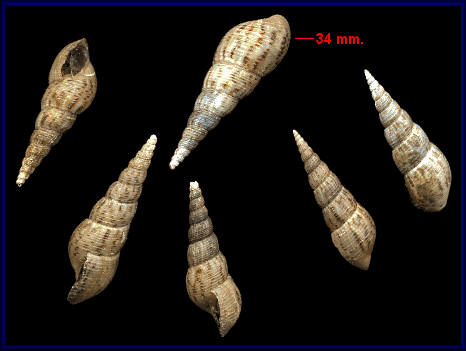
Popular in the aquarium industry
Known host for an introduced trematode that parasitizes many species of fish, can also host parasites of humans
Size: 1.5 in, 3.15in max.
Elongate, conical shell with as many as 10 whorls, usually light brown marked with rust colored spots.
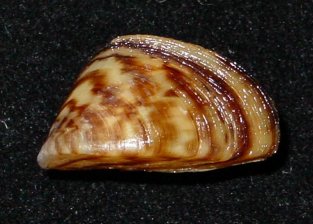
Both Zebra and Quagga mussels have byssal threads which allow them to attach to surfaces.
There are not native mussels in Montana that can attach to things.
If you see a mussel attached to a surface in Montana either in the wild or on a boat (especially if coming from freshwater) report it to FWP.

Parasitizes freshwater fish, particularly cyprinids
infects anterior intestine of fish.
Spread by ingestion of infected copepods
Fish host species: Primarily Cyprinidae except for gold fish.
Optimal temperature: 25°C
Detected in southern half of US, NH, NY, Hawaii
Bothria, pyramid- shaped scolex and segmented body
Has a fleshy, arrow-head or heart shaped head region
It has no neck; instead, body segments begin directly behind the head region.
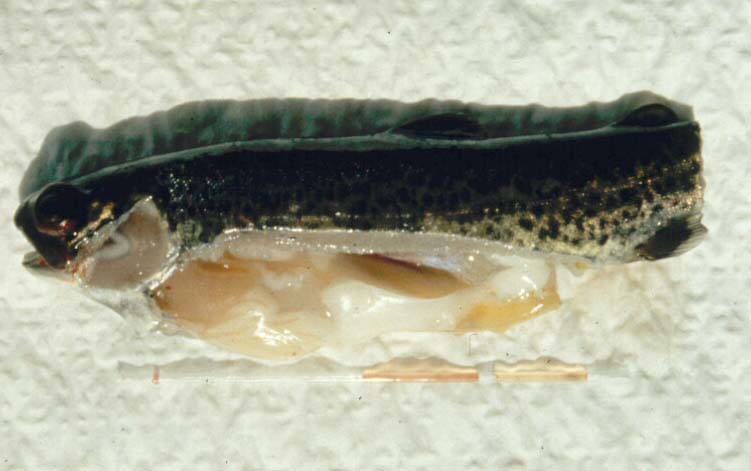
Red areas are positive NWFHS
an infectious viral disease of salmon and trout
Symptoms: lethargy, swim high in the water column, anorexia, popeye, pale gills, darkening of body, abdominal distention
Synonyms: Sockeye salmon virus, Oregon sockeye virus, Sacramento River Chinook disease, Sacramento River Chinook virus
First discovered in Montana in 2014

First wild discovery in 2000
A protozoan that infects and degrades muscle of yellow perch and other species
Symptoms: white and opaque flesh
Distribution: Wisconsin, Minnesota and Ontario
Infected filet should be disposed of in the garbage, burned or buried
Clean and dry all equipment thoroughly


Discovered in Great Lakes in 2005
Mutated marine strain
Rhabdovirus – related to Rabies
Can infect and cause mortality in more than 30 species
Causes hemorrhaging and organ failure
Spread via contact or body fluids (such as urine)
Can survive outside of host in water up to 14 days
Can survive being frozen
At a low level of infection, fish might not display any symptoms.
As the infection becomes greater, fish will display widespread hemorrhages (bleeding) throughout body surface (eye, skin and fins) and within the internal organs (swim bladder, intestine, kidney etc).
Because of the bleeding, gills and liver might appear pale.
Sick fish will often be listless, swim in circles, and are frequently observed at the surface of the water.

First discovered in Montana in 1994
Native to Europe
By damaging cartilage, whirling disease can kill young fish directly, or cause infected fish to swim in an uncontrolled whirling motion. This can make it impossible for them to escape predators or to effectively seek food.
Caused by the myxozoan parasite Myxobolus cerebralis
Parasite digests the cartilage of young trout, especially in rainbow trout
The parasite has a complex life cycle involving a salmonid host and the worm Tubifex tubifex
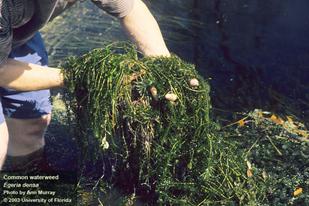

Native to Brazil
Submersed aquatic weed, found in ponds, lakes, streams and rivers
Reach 6 feet in length and are freely branching
When introduced to a lake it often forms dense mats that displace native aquatic plants, interfere with recreation and degrade native fish habitat
Easily confused with native elodea species.
Only reproduces vegetatively.
Finely-toothed leaves occur in whorls of 3-6, most commonly of 4
Leaves are 1-1 ¼” long and <1/4” wide
Undersides of the leaf midribs are smooth and without teeth unlike those of hydrilla
Flowers are white with three petals and bloom above the surface of the water

Native to Europe and Asia
Perennial, rooted, submerged aquatic vascular plant native to Eurasia, Africa and Australia
Forms dense mats which interfere with recreation and limit the growth of native aquatic plants
Tolerates low light and may grow in deep water Identification
Leaves are alternate, wide, translucent, finely toothed and have noticeably curly or wavy margins (resemble lasagna noodles) and are 1.5-4” long and up to ½” wide

Native to Europe, Asia, and northern Africa
Submersed, perennial, aquatic plan with feathery leaves arranged in whorls around the stem.
Grows thick mats in waters less than 15 deep but can grow in water to 25 feet deep or more.
Spreads by fragmentation and overland via transport on boats, motors, trailers, fishing nets, and other gear
Can quickly take over shallow lakes and rivers, which can prevent boating, fishing, hunting, and swimming Identification
Milfoil stems branch several times near the water surface.
Erect stalks emerge above water with small reddish flowers.
Typically 4, but sometimes 3-5 leaves, form a whorl around the stem.
Each leaf has 12 or more pares of leaflets.
Tops often turn red in color.

Native to Europe and temperate Asia regions
A perennial which spreads primarily from rhizomes.
Forms an extensive root system that can break into new plants if disturbed
The seeds float which allows them to be easily dispersed by water.
Green stems resemble bulrushes but are triangular in cross section
Leaf tips may be spirally twisted
This plant can reach from 1-5 ft. (0.3-1.5 m) in height and can survive in water of up to 9.8 ft. (3 m) deep. It does not tolerate salt water.
Invades long shores and the margins of slow moving waterways
Flowers grow in umbrella shaped clusters and each individual flower has 3 whitish pink petals
The leaves are linear, up to 3.2 ft. (1 m) long and triangular and fleshy in cross-section. The leaves may be erect or floating on the surface of the water.
Flowers June to August, when umbels of small, 0.75-1 in. wide, pink to white flowers develop.
Fruit is beaked which split at maturity to release the seeds.
Erect leaves and grows to about 3 feet in height

Native to other areas of the United States
A rooted aquatic perennial herb with large floating flowers and leaves
Can shade out native plant communities and impair recreation
Round leaves with slit nearly to center of leaf up to 10” across
Leaves are bright green on top and the underside is reddish or purplish.
Stem attached to center
There is one flower to a stem. Flowers are white to pink, round in shape, and 2-6” across with more than 25 thick pointed petals.
For more information see: EDD Maps (Early Detection & Distribution Mapping System )
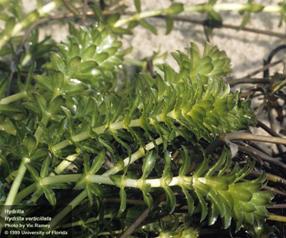
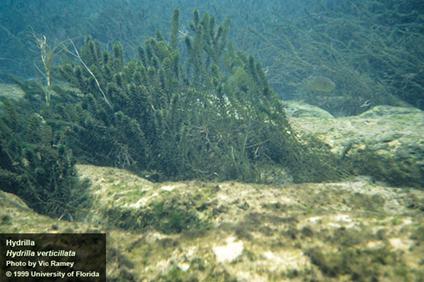
Native to southeast Asia
Submersed, rooted aquatic plant that can grow in water up to depths of 20 ft (up to 40 ft in non-turbid water).
Forms dense mats at the surface of the water
Spreads by fragmentation and via transport on boats, motors, trailers, fishing nets, and other gear, and aquarium or water garden release
Quickly takes over shallow lakes and rivers, preventing boating, fishing, hunting, and swimming and clogs irrigation canals
Easily confused with native elodea species
Only the female flowers of this dioecious plant have been found in the United States, which means no viable seed are produced.
Stem tubers are bud-like structures which can drop off the plant and successfully survive freezing or drought.
Tubers from the rhizomes are another way these plants reproduce and increase their invasive potential.
Leaves are sharply toothedwhorled in bunches of 3-8, but most often with whorls of 5.
midribs of the leaves are reddish in color with the undersides having small, raised teeth.
sharply toothed leaves in whorls of 3-8 Leaves are 0.2-0.8 in. long, less than 0.1 in. wide
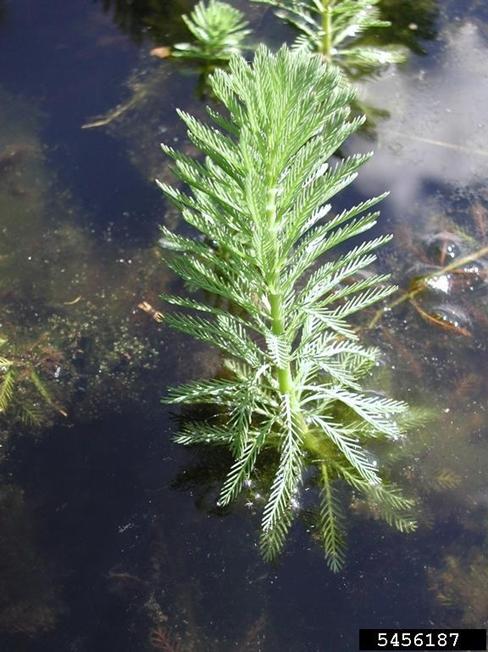
The only sample is from an unconfirmed observation in 1977 on the Lee Metcalf National Wildlife Refuge.
Native to South America
Submersed and emergent leaves
Reproduction occurs vegetatively
Has the ability to clog waterways and displace native plant species
Leaves are abundant, whorled, pinnately compound, finely dissected and appear feathery
Leaves connect to stem in whorls of 4-6
Stems are stout and blue-green in color

Native to eastern Asia
Herbaceous, perennial, aquatic plant that has stout, branching stems up to 0.1” thick.
It is often found rooted in the mud of still bodies of lakes and ponds.
Produces dense infestations that shade and crowd out native plant communities
Floating leaves with a heart to a nearly circle shape and 2-6” in width
Yellow flower with five fringed petals
The leaves arise from rhizomes and are usually opposite and unequal.
The leaves are cordate to subrotund in shape measuring from 2-6” long and wide.
The bright yellow flowers have five petals, and measure from 1-1.5” in diameter when fully open.
There is one to several flowers on each stalk. The edges of the petals are fringed.
Flowers from June to September.
